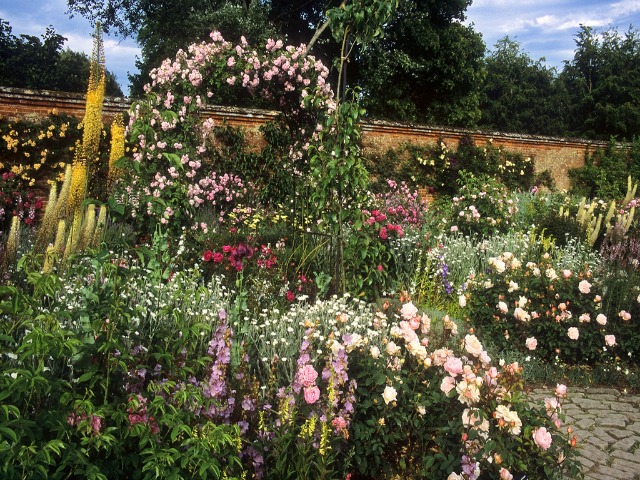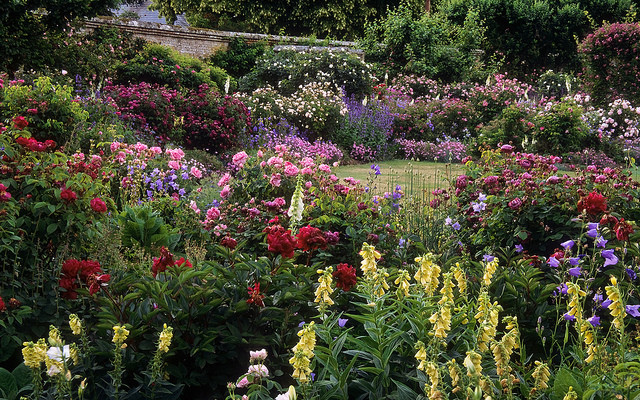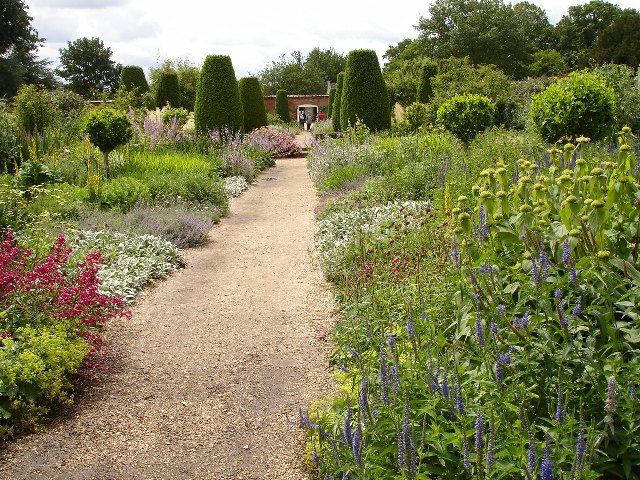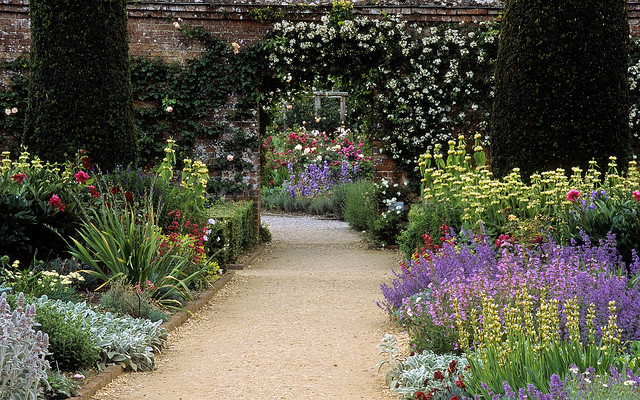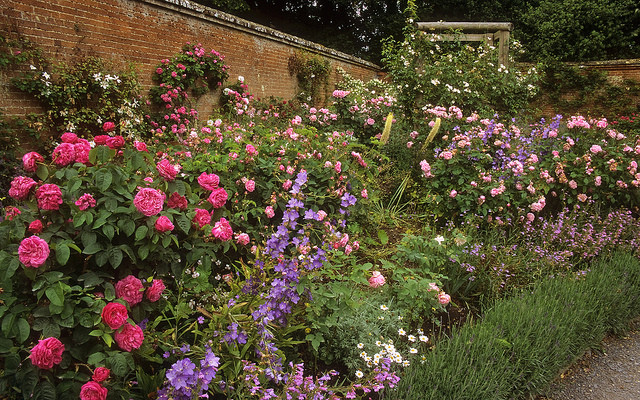Photo: Courtesy of Flickr/UK Garden Photos
Have you ever noted how you can walk through a garden that is beautifully designed, laid out, and planted, and not have a strong emotional response…..even when gardening pals are singing its praises non-stop?
And have you taken note (which I’m sure you have) when a garden grabs your senses by surprise with its essence….so much so that you can’t get it out of your mind for months, or even years, after visiting?
Photo: Courtesy of Flickr/UK Garden Photos
Such was the case when I made a trip to England some years ago with a dear friend. We had motored down to Somerset to check out some gardens and ended up staying a few nights at an outstanding B&B (who also had a fantastic garden with to-die-for poppies). The owner mentioned at breakfast that we might want to check out Montisfont Abbey–which frankly, wasn’t on our itinerary.
When we drove up, I saw a stately mansion surrounded by a rolling landscape. But no garden was in sight.
“No problem,” I thought to myself, seeing the rolling acres of lawns with a huge collections of trees (including one of the oldest plane trees in the UK) dotting the landscape. I was up for a good walk and the possibility of letting my ‘gardening palette’ have a rest for the afternoon.
After strolling around the grounds a bit, we came up what looked like a walled garden. When I walked through the entryway, I felt like I was Dorothy who had just been dropped down into The Land of Oz. I was blinded by the sheer abundance of gloriosity that grabbed my eyes and heart. There was so much to see and take in: but for the first 15 minutes, I allowed myself the pleasure of simply sauntering around and letting its beauty seep into my pores.
Photo: Courtesy of Wikimedia
At this point in my development as a gardener, I still loved roses but had pretty much banned them from my garden because of their maintenance. After visiting Sissinghurst, I began to question the wisdom of my decision of ‘no more roses in my garden’. Once I spent an afternoon in the walled garden at Montisfont, which contains the UK’s National Collection of old fashioned roses, my unconscious made the decision that at some point in the future, roses would find their way back to my own piece of paradise.
Photo: Courtesy of Flickr/UK Garden Photos
The collection contains ancient and historic roses– with some varieties dating back hundreds of years– such as alba and damask roses, gallicas, centifolias, rugosas, early china and hybrid perpetual roses, together with early tea and hybrid tea roses. The overwhelming scents from old fashioned roses draping walls, pergolas, and arches were an aphrodisiac.
Photo: Courtesy of Flickr/UK Garden Photos
There was something so celebratory and colorful about how the perennials, including peonies, poppies, nepata, lavender, Lady’s mantle, eremerus, poppies, foxgloves, campanulas and more, were planted up in conjunction with the roses in the wide borders, that this garden grabbed my heart in a unique way. Unlike some of the earlier English gardens that I had seen, where the herbaceous borders were so well orchestrated, there was a certain unrestrained quality to these borders. Perhaps it was the way that the eremerus and campanulas appeared out of nowhere (almost looking unruly) or how simple, large wood arbors were positioned on the interior corners of the brick walls that gave this garden such a brilliant flavor.
I don’t want to underestimate the impact that several other English gardens have played in my garden making. But on this given day, I applaud the garden makers of Montisfont Abbey Gardens and earmark it as a ‘must see’ garden when you visit the UK.
A tidbit of history: Founded in 1201 by William Briwere, a businessman, Montisfont Abbey began as a priory. The first family who lived there was a group of Augustinian canons who went out to preach and help those in need.
Pilgrims would visit the Priory’s holy relic and pray in its church, which still exists today within the walls of the house.
It went through several transformations throughout the centuries. The last owners were Maud and Gilbert Russell who bought it in 1934. Maud, a wealthy patron of the arts, commissioned her artist friends to embellish the estate through paintings, mosaics and even the illusion of Gothic architecture in her salon.
Maud Russell gifted the house and grounds to the National Trust in 1957 and continued to live there until 1972.
If you enjoyed this post, please share with others on social media. It’s good karma! With love, Fran

